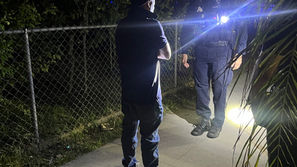She buried five children — in one month!
- Bill Coate
- Jun 30, 2018
- 3 min read

Madera County Historical Society America Francis Baley, shown here, had to bury five children in one month in 1878. Diphtheria took the lives of all of her young ones as well as that of her 17 year-old brother, who had been sent to help her nurse the kids to health.
Francis was her middle name, and that’s what people called her. She was, however, christened America — America Francis. Born in Nodaway County, Missouri, this Madera County pioneer suffered almost as much as her namesake. She endured an Indian attack on the wagon trip to California; her father at first forbade her to marry, then after he finally relented, she buried, not one, but two husbands. None of these blows, however, compared with the ordeal through which she struggled in 1878.
Francis Baley came to California with her family from Missouri in the spring of 1858. They brought with them a sizable herd of cattle, which was to be the nucleus of a large ranch. After being assured by the army that there was plenty of grass and water along the way and that the Indians were friendly, the Baley’s decided to travel along what was then known as “Beale’s Wagon Road.”
Everything went reasonably well until they arrived at the Colorado River near the present day town of Needles, California. As they were making preparations to cross the river, the party was attacked by a large group of Mojave Indians. Only a lucky shot from the rifle of Francis’ father, Gillum Baley, which killed the chief leading the attack, saved the emigrants from certain death. When the dust had settled, eight members of the wagon train had been killed, and thirteen lay wounded. During the battle, the Indians succeeded in capturing nearly all of the livestock, forcing the settlers to abandon their wagons, as they didn’t have enough oxen to pull them.
The survivors held a council and decided that their only alternative was to walk back to Albuquerque, a distance of more than 500 miles! Their return journey across the desert on foot with but little food and water was one of great hardship and suffering. Only a fortuitous meeting with two other emigrant trains saved Francis and her family from death by starvation or thirst.
The Baleys finally got to California and settled first on the Chowchilla River in what became known as Baley Flat. After a flood destroyed their home, they moved to Millerton on the San Joaquin River. That’s where Francis met Abraham Yancey and married him, while her father looked on with a jaundiced eye.
It wasn’t easy raising offspring from infancy to adulthood in the 19th century. Danger was omnipresent, and one of the most feared was diphtheria. When it raised its ugly head, whole families were often decimated — especially the children. This is what happened to Abraham and America Francis Yancey in May of 1878.
Their 10 year-old son, Alexander, was the first to fall prey to the malady, then in swift succession, his brothers and sisters became ill. Francis was frantic. She sent word to her mother and father for help, whereupon they dispatched Louis Leach Baley, youngest brother of Francis, to help her nurse the youngsters to health.
Notwithstanding that the best possible medical assistance of the day was employed, the situation turned hopeless. On April 27, Alexander died and was buried in the cemetery at Tollhouse. Then the next week three more of Francis’ children were laid to rest. On May 5, both Gillum, age 8, and Daisy Yancey, age 2 years, died, and three days later 8 month-old Alice was taken That left only four-year-old George, and on May 29, 1878, he also succumbed to the disease.
By the end of the month, the Tollhouse Cemetery held the remains of the five Yancey children, all of whom died within a month of each other. There was, however, one more victim, and he was buried in the pioneer cemetery at Academy, near present day Clovis.
Louis Leach Baley, the 17-year-old brother of Francis Baley — the one who had been sent to help — the one whom everyone imagined to be beyond the reach of the disease, was struck down and died.
After burying every one of her children at Tollhouse, Francis Baley Yancey joined her parents and laid to rest the brother who gave his own life in the attempt to save the Yancey children.
For those who long for the “good old days,” a visit to the Tollhouse Cemetery should be quite enough to dispel some of those romantic feelings.
























Comments